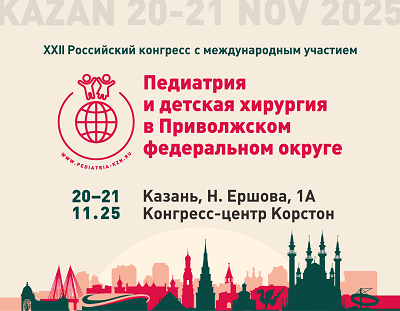Features of the onset of juvenile psoriatic arthritis
https://doi.org/10.21508/1027-4065-2024-69-3-94-100
Abstract
Juvenile psoriatic arthritis is a chronic inflammatory disease of the peripheral joints, spinal joints and entheses, which occurs in 10–25% of patients with psoriasis. Studying the features of the juvenile psoriatic arthritis debut will increase early diagnosis and will help to avoid disability, socialize and integrate the child into society.
Purpose. To identify the relationship between the onset of juvenile psoriatic arthritis and the age and gender of the child, to trace the nature of the articular syndrome in our patients from the onset to the height of the disease.
Methods. 155 patients with an established diagnosis of juvenile psoriatic arthritis were examined. To analyze the data, universal nonparametric (randomization-permutation) algorithms for constructing confidence intervals (CI) and statistical comparisons based on the bootstrap and Monte Carlo methods were used.
Results. It was possible to identify a relationship between the onset variant and the gender of the child. The incidence of asymmetric oligoarthritis in boys and girls at onset was approximately the same, 68% and 59%, respectively, and did not differ significantly. At onset, girls had a higher incidence of rheumatoid-like arthritis (37%) (p<0.005), and boys had a higher incidence of spondyloarthritis (26%) (p<0.005). A relationship was also revealed between the onset, gender and age of the child. Girls aged 0–6 years most often debuted with asymmetric oligoarthritis (90%) (p<0.005), and at the age of 11–15 years — with the rheumatoid-like (polyarticular) variant (73%) (p<0.005). In boys aged 0–6 and 7–10 years, asymmetric oligoarthritis predominated (100% and 100%, respectively) (p <0.005), and at the age of 11–15 years, spondyloarthritis with damage to peripheral joints was more common (73%) (p<0.005). A transformation of the articular syndrome was revealed: if at the onset of the disease asymmetric oligoarthritis was most common (63%), then 5 years from the onset of the disease, 40.7% of the observed children had a rheumatoid-like (polyarticular) variant of the disease.
Conclusion. The course of juvenile psoriatic arthritis may be influenced by the gender and age of the child at onset; a certain pattern of the course of juvenile psoriatic arthritis from oligoarthritis to the polyarticular (rheumatoid-like) variant has been identified.
About the Authors
S. N. ChebyshevaRussian Federation
N. A. Geppe
Russian Federation
I. M. Korsunskaya
Russian Federation
V. V. Sobolev
Russian Federation
A. V. Polyanskaya
Russian Federation
L. G. Khachatryan
Russian Federation
M. N. Nikolaeva
Russian Federation
E. Yu. Afonina
Russian Federation
References
1. Chebysheva S.N., Geppe N.A., Zholobova E.S., Aleksanyan K.V., Meleshkina A.V., Dagbaeva D.V. Clinical Features of Psoriatic Arthritis in Children. Doctor.Ru. 2020; 19(10): 22-26. (in Russ.). DOI: 10.31550/1727-2378-2020-19-10-22-26.
2. Gelfand J.M., Gladman D.D., Mease P.J., Smith N., Margolis D.J., Nijsten T. et al. Epidemiology of psoriatic arthritis in the population of the United States. J Am Acad Dermatol 2005; 53(4): 573. DOI: 10.1016/j.jaad.2005.03.046
3. Prakken B.J., Martini A., Malattia C. Juvenile idiopathic arthritis: pathogenesis and clinical aspects. EULAR Textbook on Paediatric Rheumatology. Amsterdam; 2018: 24.
4. Beukelman T., Kimura Y., Ilowite N.T., Mieszkalski K., Natter M.D., Burrell G. et al. The new Childhood Arthritis and Rheumatology Research Alliance (CARRA) registry: design, rationale, and characteristics of patients enrolled in the first 12 months. Pediatr Rheumatol Online J 2017; 15(1): 30. DOI: 10.1186/s12969-017-0160-6
5. Horneff G., Klein A., Oommen P. T., Hospach A., Foeldvari I., Feddersen I. et al. Update on malignancies in children with juvenile idiopathic arthritis in the German BIKER Registry. Clin Exp Rheumatol 2016; 34(6): 1113-1120.
6. Alexeeva E.I. Juvenile idiopathic arthritis: clinical picture, diagnosis, treatment. Voprosy sovremennoi pediatrii 2015; 14(1): 78-94. (in Russ.). DOI: 10.15690/vsp.v14i1.1266
7. Sevostyanov V.K., Zholobova E.S., Melik-Huseynov D.V. Structure of juvenile idiopathic arthritis according to the register of children with rheumatic diseases in Moscow. Meditsinskoe obozrenie 2017; 1: 6-10. (in Russ.).
8. Chebysheva S.N., Zholobova E.S., Meleshkina A.V. Psoriatic Arthritis in Children: Diagnosis, Clinical Features, and Treatment. Doctor. Ru. 2012; 9(77): 32-36. (in Russ.).
9. Chebysheva S.N. Psoriatic arthritis. A guide in paediatric rheumatology. Editors N.A. Geppe, N.S. Podchernyaeva, G.A. Lyskina. Moscow: GEOTAR-Media; 2011: 285-299. (in Russ.).
10. Kruglova L.S., Bakulev A.L., Korotaeva T.V., Lila A.M., Pereverzeva N.O. Psoriasis. Moscow; GEOTAR-Media, 2022; 320. (in Russ.).
11. Lambert J.R., Ansell B.M., Stephenson E., Wright V. Psoriatic arthritis in childhood. Clin Rheum Dis 1976; 2: 339-352.
Review
For citations:
Chebysheva S.N., Geppe N.A., Korsunskaya I.M., Sobolev V.V., Polyanskaya A.V., Khachatryan L.G., Nikolaeva M.N., Afonina E.Yu. Features of the onset of juvenile psoriatic arthritis. Rossiyskiy Vestnik Perinatologii i Pediatrii (Russian Bulletin of Perinatology and Pediatrics). 2024;69(3):94-100. (In Russ.) https://doi.org/10.21508/1027-4065-2024-69-3-94-100











































